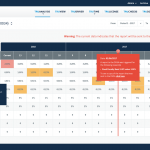A comfortable work environment shapes how employees think, feel, and perform.
When people step into a workspace that supports their physical comfort and emotional well-being, they find it easier to focus and maintain energy throughout the day.
Elements such as air quality, temperature, lighting, and ergonomic design play powerful roles in influencing mood and efficiency.
Creating an atmosphere where individuals can perform at their best requires attention to detail and a thoughtful approach to comfort.
When a workplace balances these factors, productivity often rises naturally, and morale tends to follow.
Climate Control and Its Impact on Daily Performance
The temperature of a workspace has a direct link to concentration and energy. If an office is too hot, people begin to feel sluggish and distracted. When it is too cold, they may tense up and lose focus. Maintaining a consistent and comfortable climate supports steady productivity throughout the day. Heating and cooling systems that respond effectively to seasonal shifts help create this balance.
By working with experts like K&S Heating & Air, businesses can maintain efficient temperature regulation that contributes to comfort and productivity. Reliable systems not only keep the air fresh and clean but also reduce fluctuations that can interrupt workflow. Employees who spend their days in stable and pleasant temperatures often report higher levels of satisfaction and engagement with their tasks.
The Role of Lighting in Employee Focus
Lighting can make a remarkable difference in how people work. Natural light helps keep employees alert and improves mood, while poor lighting often causes fatigue or headaches. Workspaces that include large windows, skylights, or well-designed artificial lighting schemes tend to encourage longer periods of sustained attention. Adjustable lighting also gives employees control over their personal comfort.
For example, task lamps or dimmable overhead lights allow individuals to modify their space according to their needs. A combination of daylight and flexible artificial lighting creates an atmosphere that feels both welcoming and practical. Companies that invest in good lighting design often find that their teams experience fewer visual strain issues and better overall productivity.
Air Quality and Its Influence on Health and Energy
The air people breathe during the workday plays a quiet but significant role in how they perform. Poor ventilation can trap allergens, dust, or pollutants, which may cause fatigue and lower concentration levels. On the other hand, clean, well-circulated air helps employees stay alert and comfortable. Regular maintenance of HVAC systems prevents the buildup of irritants and helps maintain proper humidity levels.
Plants in the office can further purify the air, creating a fresher environment. When workers breathe easier, they think clearly, make better decisions, and sustain energy throughout the day. Employers who focus on air quality often notice fewer sick days and a stronger sense of well-being among staff.
The Psychological Effects of Comfort and Space
Physical comfort affects mental clarity. Crowded desks, cluttered areas, or uncomfortable furniture can make an office feel stressful. In contrast, organized, well-spaced layouts promote calm thinking and smoother collaboration.
Ergonomic chairs, adjustable desks, and proper computer monitor placement reduce strain and make long hours more manageable. When employees feel physically at ease, their minds remain free to concentrate on creative and analytical tasks. A visually appealing and comfortable environment communicates that management values its people, which encourages loyalty and effort.
The Connection Between Noise Levels and Concentration
Noise is one of the most common workplace distractions. Open offices often struggle with this issue, as conversations and movement can interrupt focus. Creating designated quiet zones or using sound-absorbing materials can make a noticeable difference. Some offices install white noise systems to mask background sounds, helping employees maintain concentration.
Others allow the use of headphones so individuals can choose their preferred auditory setting. An environment that supports concentration through thoughtful sound management leads to more consistent productivity and reduced stress.
The Role of Management in Maintaining Comfort
Comfortable environments rarely happen by accident; they are the result of ongoing attention from management. Regular feedback from employees helps identify areas that need improvement. Small adjustments, such as recalibrating temperature settings or rearranging workstations, can make a noticeable difference. Leaders who prioritize comfort send a clear message that the well-being of their teams matters.
Offering flexibility, such as allowing brief breaks for stretching or short walks, further supports health and focus. The most productive workplaces are those where managers listen and adapt, creating conditions that make daily performance easier and more rewarding.
A comfortable work environment is more than a pleasant luxury; it is a strategic asset that shapes how people perform each day. From temperature and air quality to lighting, noise control, and ergonomic design, every aspect of comfort contributes to productivity. When employees feel physically supported and mentally at ease, they are more motivated, creative, and efficient. By paying attention to these details and investing in professional support where needed, such as through climate control specialists, businesses can transform their workspaces into places where people thrive. Comfort and productivity are deeply connected, and nurturing one naturally strengthens the other.









